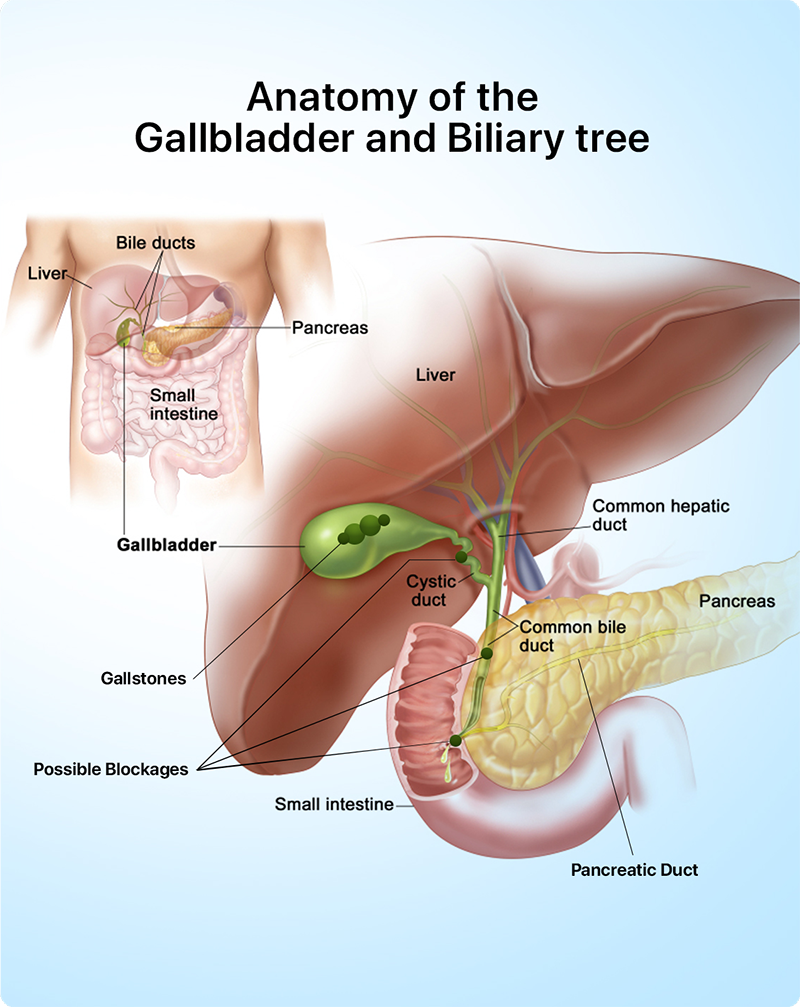What to Expect
Patients who opt for gallstone removal in Singapore can expect the following:
-
Before the Surgery
Before surgery, anaesthesia will be given intravenously so that patients will not be
conscious throughout the procedure. A tube is also inserted into the throat to
facilitate breathing.
-
During the Surgery
Depending on the patient’s health and preference, as well as the doctor’s
recommendation, cholecystectomy may be done laparoscopically (keyhole) or open surgery.
-
After the Gallstone Surgery
Most patients go home on the same day or the day after the surgery. If the gallstones
surgery was performed with an open procedure (larger cut), the patient may have to stay
a little longer. Some pain, nausea and vomiting may occur but most are well-controlled
by medications.
Once discharged, most patients can perform light duties and most activities of daily living.
Most of the patients can return to work within a week or less after the surgery, after a
follow-up review with the surgeon. A minority of patients may still feel some bloating and
some may have loose stools after the surgery as the body gets used to the absence of the
gallbladder. Most symptoms will usually resolve within a couple of weeks.
What Are the Risks of Gallstones Surgery?
This is generally a safe operation with very low complication rates. The risks of gallstones
surgery include risks related to general anaesthesia, infection, bleeding and injury to nearby
organs, some of which may require repair of the injury. Hernia may form at the incision sites,
especially in obese patients that may require repair in the future (<1%). Occasionally (< 3%),
stones may drop into the bile duct during the surgery or it may be undiagnosed before the
surgery, these may require subsequent procedures (e.g., ERCP) to treat if necessary.
In the event of conversion of the laparoscopic approach to an open procedure, the risks will remain the same as above with similar good outcomes. However, post-operative recovery and hospital stay may be slightly longer.
RESULTS AND RECOVERY OF GALLBLADDER SURGERY
Patients are able to go back to their normal lives and diet after having a gallbladder
surgery, rarely, but they may experience some differences in how they process fatty/oily
foods. This includes experiencing symptoms such as loose stools, bloating, and cramping.
This usually resolves in a couple of weeks with some simple diet modifications. The vast
majority of patients have a better or normal digestive habits after surgery.
Patients who have undergone laparoscopic cholecystectomy can go back to their regular
routines a week or less after surgery, while those who had an open procedure may take a few
more weeks to make a full recovery.



